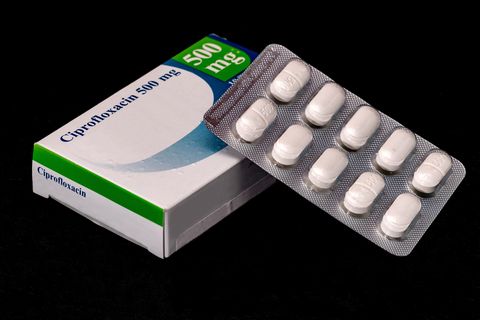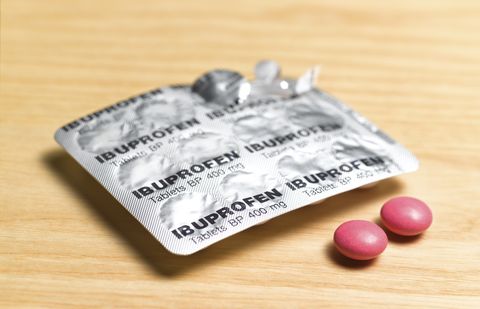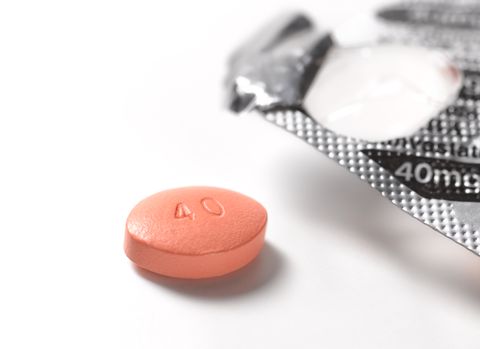Both prescriptions and over-the-counter meds may pose a risk.
Taylor Ceepo was only 22, a star soccer player freely graduated from Walsh University, when she lined up for the Cleveland Half Marathon on May 19.
But less than a quarter-mile from the finish, Ceepo collapsed and died. The cause was sudden cardiac death due to a combination of factors: physical exertion, pseudoephedrine use, and a hidden heart condition called cardiomyopathy. The manner of her death was ruled an accident, the Cuyahoga County Medical Examiner’s Office confirmed to Runner’s World in August.
The sad scenario illustrates a basic truth: “There’s no question that running is good for us, but we’re not superheroes,” says ultrarunner Carolyn Smith, M.D., a family physician who treats collegiate athletes at the Marquette University Medical Clinic. “We all can potentially have underlying medical conditions that running just isn’t going to fix.”
What’s more, some common over-the-counter or prescription medications—like the stimulant pseudoephedrine, found in Ceepo’s system, which is an active ingredient in decongestants like Sudafed—may exacerbate underlying medical issues or otherwise prove risky for runners.
If you’re taking medications long-term, it’s always a good idea to make sure your doctor knows about your training habits, says Timothy Miller, M.D., director of the endurance-medicine program at The Ohio State Wexner Medical Center. Even better: Consider finding a physician who specializes in or at least understands athletes.
In some cases, the timing or doses of your drugs can be adjusted to reduce the risk of harmful secondary effects, or even to make sure they’re working the same way they would in a sedentary person. There might also be an alternative that solves the same problem but with fewer runner-related risks.
Even if you can’t alter your regular regimen, you can at least be aware of the hazards a medication poses and watch out for early warning signs you’re developing complications. The same holds true for short-term prescriptions or over-the-counter treatments—knowing the risks can help you decide whether it’s worth the benefits of taking them, and if so, how to know when to stop, Smith says. Here, five to ask about specifically.
Pseudoephedrine
While a regular running routine can help keep cholesterol in check, some people have genetically elevated levels that no amount of exercise or healthy eating can alter. In these cases, statins can stand as an effective way to bring cholesterol levels down, preventing heart attacks and death in people who have coronary artery disease (and the development of the condition in people who don’t have it already), Muhlestein says.
Some studies have also linked statins to tendon damage, while others place them in the clear. Muscle pain is a well-established side effect, Muhlestein says, though it’s not always completely clear if it’s the statin that caused them. Some people may be motivated by their high cholesterol levels to start working out around the same time they start statins, and blame the drugs for soreness that results from pushing their bodies in a new way.
However, statins do increase the risk of rare but more serious condition called rhabdomyolysis, a complete breakdown of muscle tissue. In rare cases, this can cause serious damage. The higher the dosage, the greater the risk—and the danger compounds when you’re dehydrated or subjecting your body to more stress than it can handle (say, running a half marathon without training), Miller says.
To reduce your risk, stay hydrated and ramp up your training slowly, he suggests. This goes for running as well as other types of exercise—rhabdomyolysis can also occur during or after weightlifting or workouts like CrossFit. Watch out for early warning signs, which include dark urine, pain in your back near the kidney area, along with severe pain in one affected muscle group, such as the lower leg or upper leg.
Muhlestein points out that chances of this type of serious complication are low, and that for many people, statins prevent life-threatening events like heart attacks and strokes. So, your benefit-risk calculation here might be a bit different than, say, taking a cold medicine. If you’re worried about risks like rhabdo while you’re taking statins, you can also ask your doctor to check your liver enzymes and track levels of creatine kinase, a protein that forms when muscles break down.
Corticosteroids
A steroid shot every once in a while to reduce the inflammation of an injury probably won’t cause you major harm, Miller says. But if you have to take drugs like prednisone long-term—for conditions like arthritis, blood disorders, or immune-system problems—should know that they can leach calcium from your bones, weakening them over time.
Especially when combined with the repetitive impact of running, this could to stress reactions and stress fractures, he points out. Talk with your doctor about the dangers; you might be able to add a bone-strengthening drug to your regimen to balance out the risk.
A true love for sports







Recent Comments